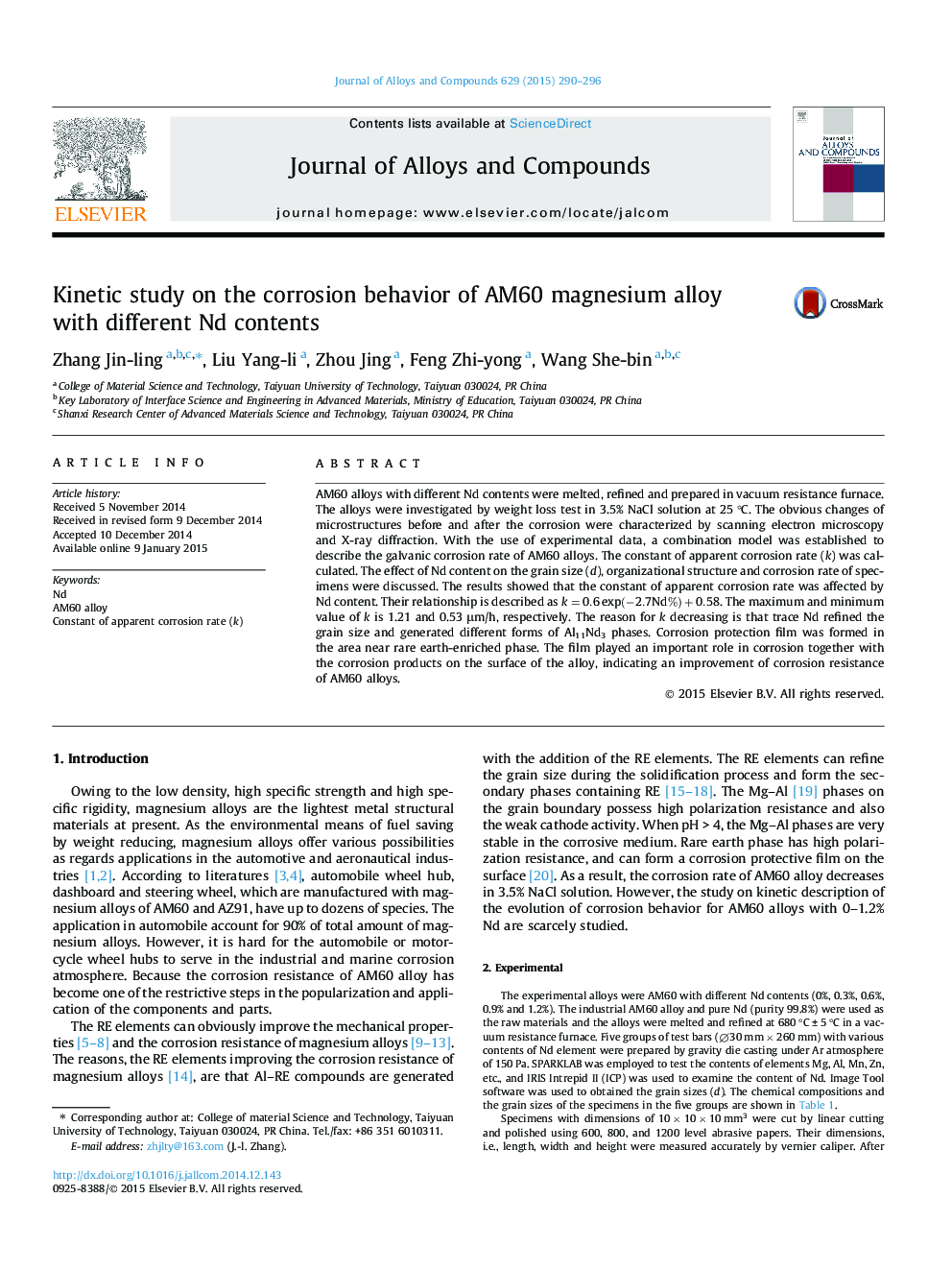| Article ID | Journal | Published Year | Pages | File Type |
|---|---|---|---|---|
| 1609747 | Journal of Alloys and Compounds | 2015 | 7 Pages |
Abstract
AM60 alloys with different Nd contents were melted, refined and prepared in vacuum resistance furnace. The alloys were investigated by weight loss test in 3.5% NaCl solution at 25 °C. The obvious changes of microstructures before and after the corrosion were characterized by scanning electron microscopy and X-ray diffraction. With the use of experimental data, a combination model was established to describe the galvanic corrosion rate of AM60 alloys. The constant of apparent corrosion rate (k) was calculated. The effect of Nd content on the grain size (d), organizational structure and corrosion rate of specimens were discussed. The results showed that the constant of apparent corrosion rate was affected by Nd content. Their relationship is described as k=0.6exp(-2.7Nd%)+0.58. The maximum and minimum value of k is 1.21 and 0.53 μm/h, respectively. The reason for k decreasing is that trace Nd refined the grain size and generated different forms of Al11Nd3 phases. Corrosion protection film was formed in the area near rare earth-enriched phase. The film played an important role in corrosion together with the corrosion products on the surface of the alloy, indicating an improvement of corrosion resistance of AM60 alloys.
Related Topics
Physical Sciences and Engineering
Materials Science
Metals and Alloys
Authors
Zhang Jin-ling, Liu Yang-li, Zhou Jing, Feng Zhi-yong, Wang She-bin,
